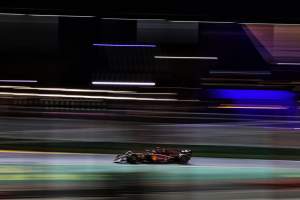That George Russell qualifying sixth represented a good result, with team-mate Lewis Hamilton not even making it to Q2, tells you everything you need to know about the extent of the difficulties faced by Mercedes during Formula 1’s Saudi Arabian Grand Prix weekend.
A place on the third row more or less matched its achievement in the Bahrain season opener, where Hamilton qualified fifth, although Russell did believe that beating Alpine driver Esteban Ocon to fifth “was possible if I really put absolutely everything together” given the deficit was just 0.036s.
But its deficit to the front grew by approximately one-third in Saudi Arabia, extending from 0.751% off the pace last weekend to 1.025% in Jeddah.
The reason for its pace problems are no secret because it’s no different to what Mercedes was grappling with during pre-season testing and in Bahrain – porpoising. As frustrated Russell explained after qualifying, the Mercedes still can’t access the lap time the team believes is in the car because it can’t run low enough.
“It’s exactly the same as we’ve seen since day one,” said Russell when asked by The Race about the limitation Mercedes is suffering from.
“The only way to run is to raise the car very high. And obviously, with this ground effect car, we lose all of the downforce.
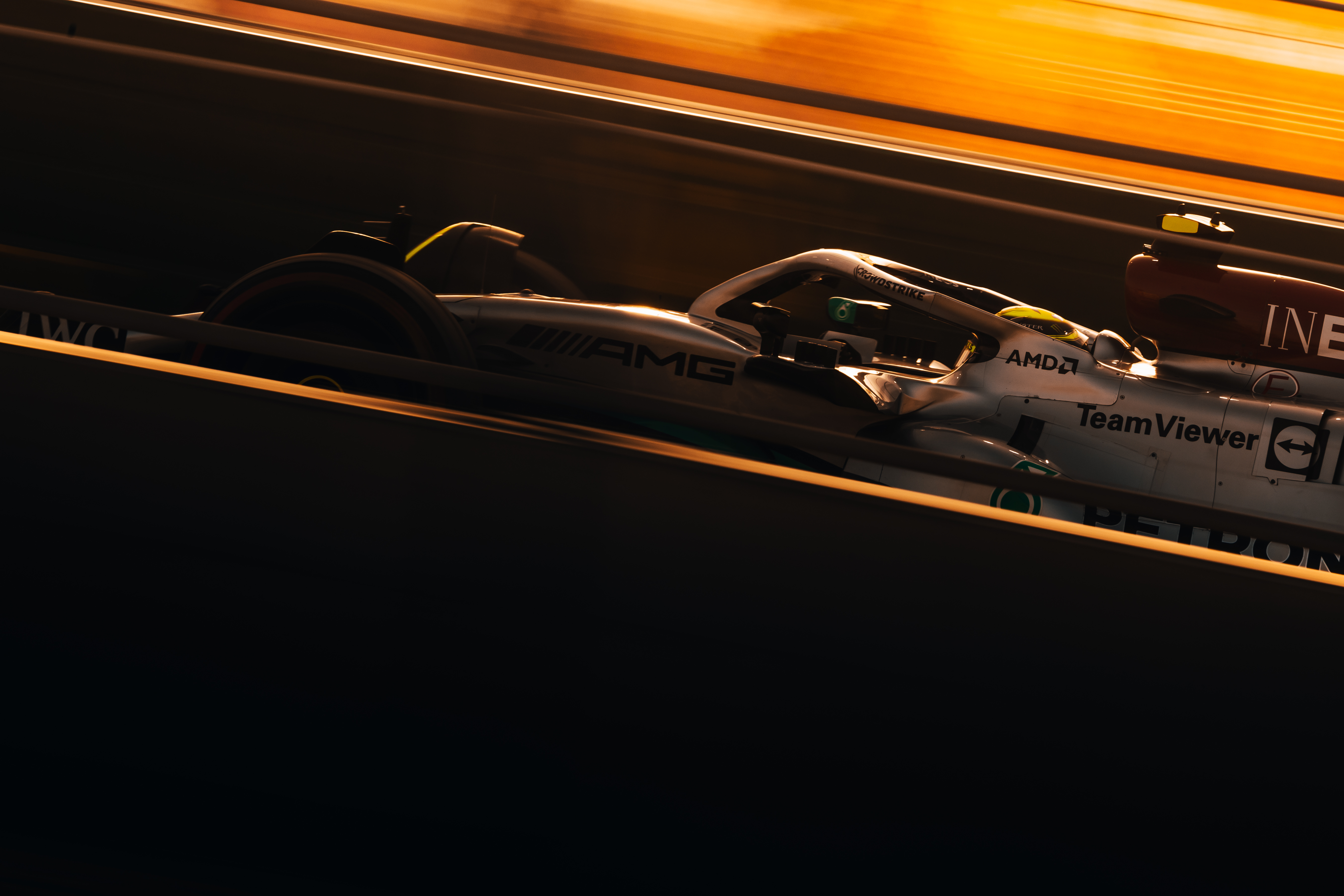
“We know that if we can get the car on the ground, there’s a huge chunk of laptime there but we can’t achieve that at the moment.
“It’s all well and good saying that, but we can’t physically achieve that right now. So we need to have a rethink.”
The configuration of the Jeddah Corniche Circuit potentially explains the increased deficit to the front. It’s a high-speed track with plenty of fast sweeps that will inevitably punish any car having to run higher.
And doing so is a fact of life for Mercedes now and most likely in the upcoming races given it has made progress mitigating the problem but is still limited by it.
Mercedes trackside engineering director Andrew Shovlin described the level of porpoising as becoming “unpredictable” during Friday practice.
“It’s been more of a challenge than Bahrain, and we weren’t fast enough in Bahrain,” said Shovlin.
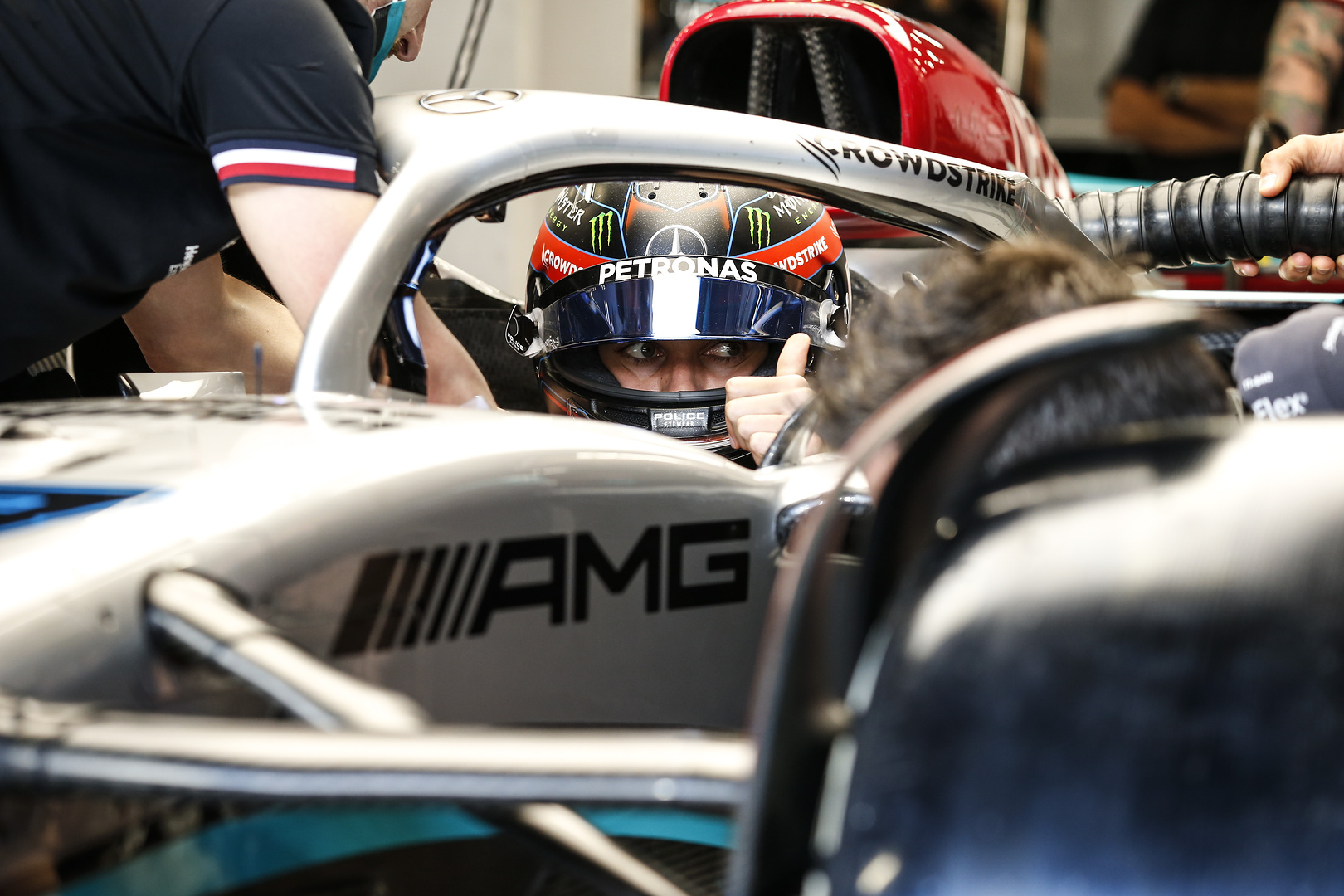
“On Friday we were bouncing around too much. It was getting to a level where it was unpredictable for the drivers. We’ve managed to reduce that but we haven’t ended up with an overall fast enough car.
“Now, fundamentally, we need to understand the problem better. We’ve got some avenues I think are giving us a good direction.
“It’s taking a bit of time to get those parts on the car and we are working very hard. But we are well aware there are other teams working on this issue faster than we have and that’s not the standards we normally work to.
“So every bit of effort at the factory is going into getting on top of it, making sure we don’t neglect normal car development, but there’s a lot of work trying to pull us out of this situation.”
Not only is the porpoising problem costing performance, but according to Russell it’s also proving distracting for him as a driver.
“It’s tricky because we’re putting all of our effort into solving this porpoising issue, and it’s not allowing us to focus on other things, as a driver it’s not allowing me to focus on the driving as much,” said Russell.
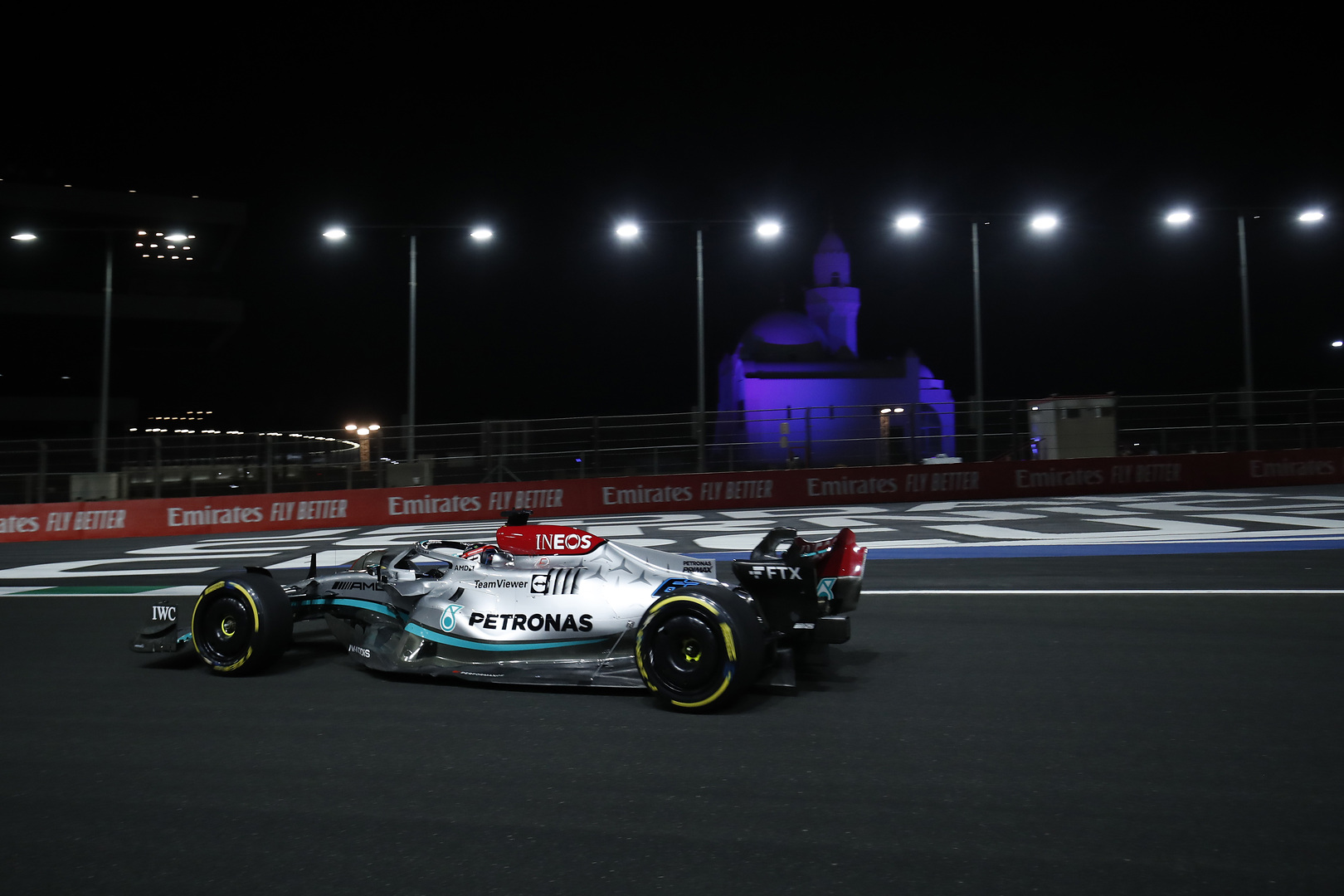
“The fine-tuning of the balance, the set-up, we can’t really do because all of our emphasis is on solving this issue. So we’ve got work to do.”
Russell’s time loss to fastest qualifier Sergio Perez’s Red Bull was constant through the lap, although the rate of losses did increase towards the end of the lap.
With Red Bull running a low drag level, the end-of-straight speed disadvantage was marked, although Russell was losing out in the corners as well.
Mercedes also lacks a genuine low-downforce rear wing assembly, as The Race’s Gary Anderson suggested was the case on Saturday.
While this cannot be blamed for all of Mercedes’ deficit, this is another area where it is playing catch-up as it’s yet to have a full suite of rear wing assemblies available.
“We have got another wing that’s in the pipeline, a dedicated low drag wing that couldn’t achieve high downforce,” said Shovlin.
“This [cutting back of the rear wing] wasn’t a response to Bahrain. When we were developing the car, we’d already planned to be able to achieve this drag level but it was interesting to see how the car works with a lower drag level.
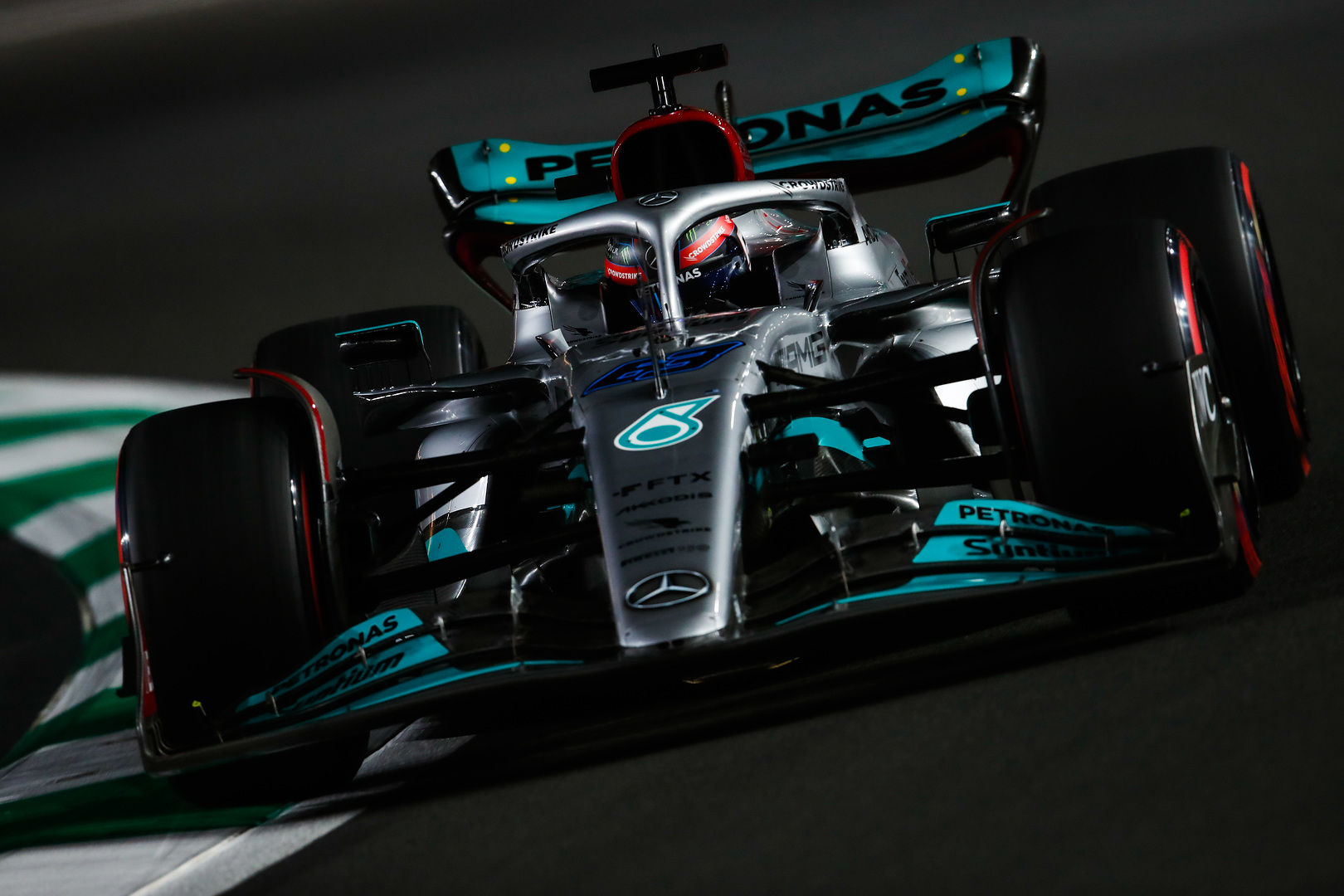
“Through the weekend, we’ve just been going lower and lower.”
Hamilton battled all of these problems and more. He suggested after qualifying that he might make a series of changes to the car, which would require breaking parc ferme and therefore lead to a pitlane start.
He qualified only 16th, lapping 0.663s than Russell during Q1 and being bumped into the relegation zone by Aston Martin driver Lance Stroll bolting on a third set of softs late on and outpacing him by 0.087s.
The possibility of a pitlane start cannot be discounted, although according to Shovlin there was no radical difference between the set-up of the two cars.
He indicated Hamilton had a little too much front-end grip, which led to oversteer on turn-in that proved hugely costly into the fast sweeps in particular.
“Nothing radical,” said Shovlin when asked by The Race about the set-up divergence between the two cars.
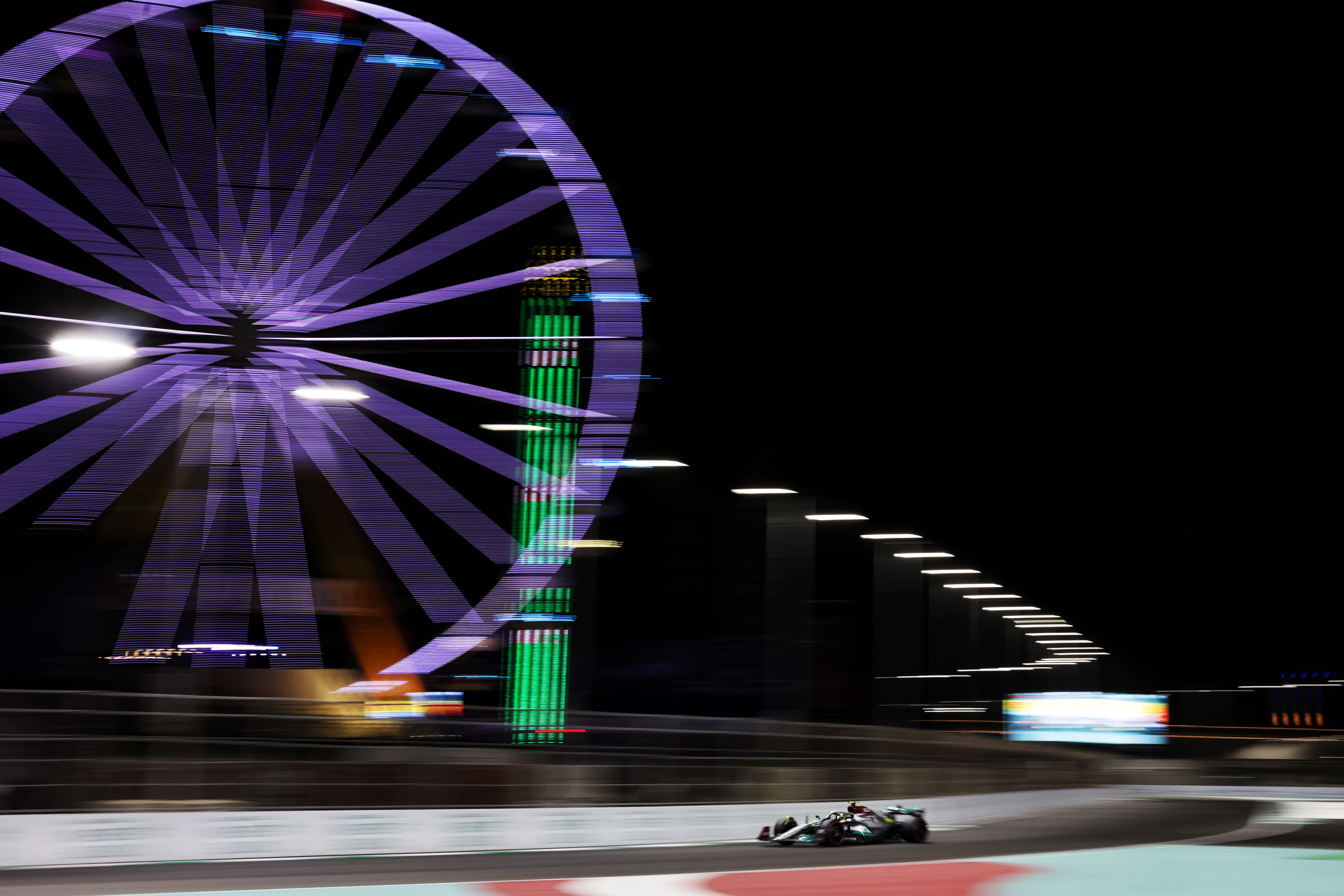
“Speaking with Lewis, he feels he had too much front end in the car. A bit of that may have been that he had less rear grip, but there was no radical departure in terms of the setup. It was just that we are not quick enough right now.
“This is a circuit that really needs the drivers to have confidence in the car and you saw Lewis opening the laps sliding around a lot with a lot of oversteer and he wasn’t able to get the feel for it and build the confidence. And because we haven’t got enough performance margin, we were bumped out.
“We are trying to explore the car and work out where we can run it. We don’t have good enough understanding for the whole set-up, certainly not like we had last year where going into a sprint race we could put a setup on it we knew would be generally was good enough for pole.
“Now we are having to make quite big changes to just try and understand what everything does.”
Compared to Russell in Q1, Hamilton was visibly busier behind the wheel trying to keep the loose rear under control and was slower than Russell through the vast majority of the lap.
Those struggles, combined with a condensed field spread, conspired to mean that Hamilton was eliminated in Q1 on pace (so on pace rather than through an accident or mechanical problems) since the 2009 British Grand Prix.
Shovlin described the Bahrain GP weekend as one of “damage limitation” for Mercedes, one that it achieved thanks to finishing third and fourth with Hamilton and Russell. That was assisted by the late problems suffered by Red Bull, without which the two Mercedes drivers would have been emphatically fifth and sixth.
Given the pace of the car and Hamilton’s lowly starting position, it’s the same again in Saudi Arabia – although such a successful damage limitation exercise seems unlikely without some fortune on its side.



